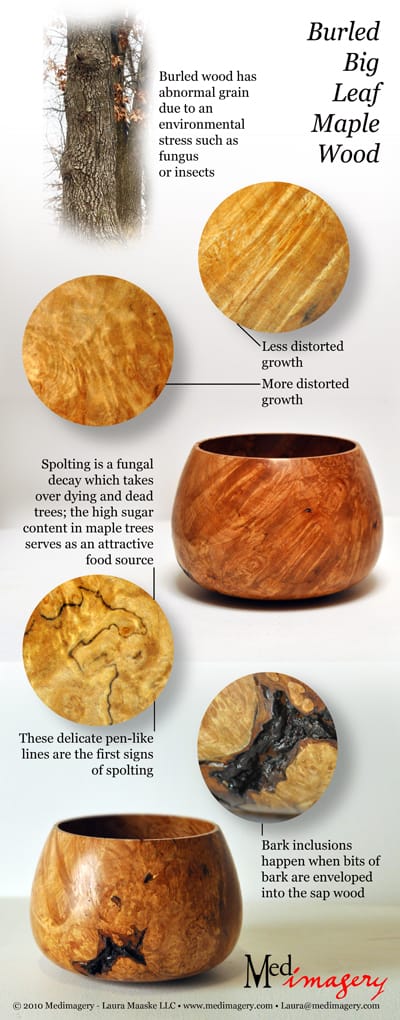
Anatomy of Wood: Bigleaf Maple Burl
Anatomy of Wood
Hardwoods like maple, as opposed to softwoods, naturally produce a wide array of incredible patterns and details, This complexity makes wood identification a difficult puzzle at times. Typically, the family of wood can be identified, but not always the species. Details are noted in a sequence most likely to simply the identification process:
VesselsWhen viewed from the endgrain, vessels or pores simply appear to be holes in the wood. Vessels transport sap. Vessels only exist in hardwoods, so they are a clear indication of a hardwood. Softwoods rely on tracheids.

Featured woodturning artist: Harold Solberg
Photographs and Poster by Laura Maaske, MSc.BMC, Medical Illustrator & Medical Animator| e-Textbook Designer
January 15, 2011
———————————-
Laura Maaske, MSc.BMC, Medical Illustrator & Medical Animator
e-Textbook Designer | Health Communicator | Scientific Illustrator




The Anatomy of Wood. I like your illustrations. Wood is something which really helps us to delve into the mystery of life. The grain of a log sawed vertically reveals what I
see as representing the continuity of life. The grain patterns resemble rivers, going on and on, eventually reaching the sea, a symbol of God. Sawed horizontally, the log displays its rings. A ring is a symbol of eternity.